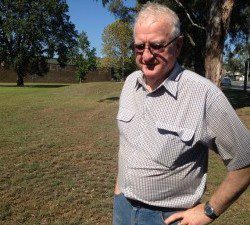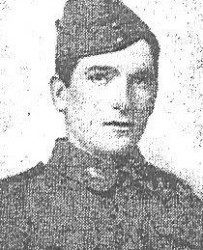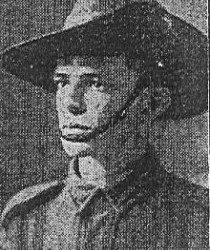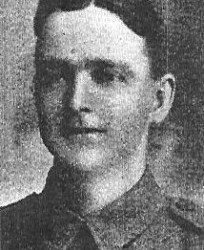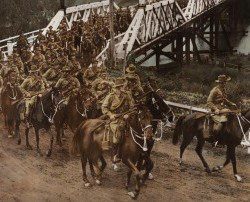
On October 20, 1914, Fred Sharp, aged just 23, was on his way to Gallipoli.
Swept up in the swelling enthusiasm for the Australian Imperial Force, young Fred rushed to enlist and was soon saying goodbye to his Aunt, Mrs Rannard, with whom he had been living with in her Liverpool house the previous five years.
Fred was a prominent member of the local rifle club and no doubt thought he could put his skills to good use in the service of his country.
It’s no surprise to learn from the archives that he was one of the first to rush to enlist in the south west parts of the metropolitan area of Sydney.
What Fred could not possibly have known was that that he would make his mark not because he shot down a large number of Turks but because he was the first soldier from Liverpool to lose his life on that very first Anzac Day, on April 25, 1915.
Like so many others that day, Fred Sharp was killed during the first landing on the beach at Gallipoli, easy prey for the Turkish machine guns posted high above on the cliffs of Anzac Cove.
♦ Back in Liverpool on the very day, April 25, a rare colour photograph was taken of members of the 12th Light Horse Brigade in Liverpool on their way to the war in Europe.
That 100 years later we know so much is thanks to local military historian Gary Lucas, of Chipping Norton.
Having served four years in the Citizens Military Forces (Army reserve as it is known these days), Mr Lucas has embarked on a mission to make known to as many as possible Liverpool’s military history.
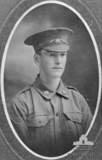
His World War I research shows that just 24 hours after Fred Sharp became the first Liverpool casualty in Gallipoli, on April 26 two more volunteer soldiers from Liverpool were killed in action: John Reid, aged 21, and Robert Ormsby, aged 42.
By the time the disastrous Gallipoli campaign was over eight months later, 31 Liverpool volunteers would make the supreme sacrifice for their country.
Including Campbell Throsby, who was the last one to die from the Gallipoli campaign.
Mr Lucas says it is time a proper memorial wall was built in their honour.
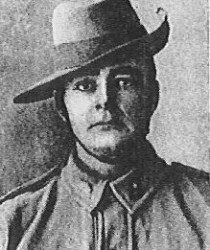
“These boys and men not only died for their country, but they were never brought back, either,’’ says Mr Lucas.
“They deserve a memorial here in Liverpool; it’s the least we can do to make sure their names live forever.’’
Mr Lucas said that 460 Liverpool district residents enlisted for the war effort between 1914 and 1918.
Of those, 83 were sent to Gallipoli, where more than a third lost their lives.
But many of the survivors of Anzac Cove, keen to continue serving Australia and the empire it was very much a part of 100 years ago, also fought on the western front in France.
Ten Gallipoli veterans were to lose their lives there, bringing the total to 41 out of 86 of Liverpool soldiers originally sent to Turkey.
If Mr Lucas gets his wish, the wall of remembrance would record for posterity the names of these braves souls who died 100 years ago on the shore of a country 18,000 kilometres away.
♦ The names inscribed on it will be those of:
James Ashton, aged 39, died of wounds, August 28, 1915, buried at sea;
Frank Bardon, aged 23, killed in action, August 22, 1915;
Bernard Blend, aged 21, killed in action, August 12, 1915; James Field, died of wounds, September 5, 1915;
James Field, died of wounds, September 5, 2015;
James Flanagan, killed in action on May 29, 1915;
Victor Foley, killed in action, August 9, 1915;
Lionel Fowler, aged 22, died of injuries on May 12, 1915;
Richard Hall, aged 27, killed in action, August 6, 1915;
Robert Hanna, killed in action, May 2, 1915;
David Henderson, aged 36, killed in action, August 7, 1915;
Cecil Howlett, aged 20, killed in action, May 2, 1915;
Henry Jones, aged 33, killed in action, August 6-9, 1915;
Octavius Jones, aged 34, died of wounds, May 12, 1915, buried at sea;
John Kelly, aged 42, died of wounds, August 15, 1915, buried at sea;
Joseph McCabe, aged 35, killed in action, July 24, 1915;
James McDevitt, died of wounds, May 19, 1915, buried at sea;
Thomas McEnery, aged 18, killed in action, May 27, 1915;
Jack McVea, died of wounds, May 3, 1915;
Stirling Melley, aged 19, died of wounds, August 12, 1915;
Robert Ormsby, aged 42, killed in action, April 26, 1915;
William Pearson, aged 22, died of wounds, October 16, 1915, buried at sea;
David Peters, died of wounds, June 20, 1915;
Thomas Ramage, aged 22, killed in action, May 28, 1915;
John Reid, aged 21, killed in action, April 26, 1915;
John Rushton, 21, died of wounds, October 19, 1915;
Fred Sharp, 23, killed in action, April 25, 1915;
Donald Stewart, aged 25, died of injuries, August 6, 1915;
Campbell Throsby, aged 31, died of injuries, February 29, 1916;
George Wilson, aged 34, killed in action, August 22, 1915;
Thomas Wilson, aged 26, killed in action, May 2, 1915;
Anthony Wood, aged 30, died of injuries, August 1, 2015.
♦ This Saturday, April 25, marks 100 years since the first Anzac Day and huge turnouts are expected at dawn services and marches in suburbs, towns and cities across the entire country.
Here in the south west of Sydney, Mr Lucas wants us to remember the 31 from Liverpool who perished at Gallipoli a century ago.
“We should remember everyone who died in every war, but I think these 31 deserve their own memorial wall of honour,’’ he says.
Mr Lucas says the 100th anniversary of Anzac Day is the perfect time to do the right thing by the region’s citizens who served their country during war.
“Liverpool also lost 79 volunteers on the western front,’’ he says.
“We also lost 62 soldiers during World War II, three in the Korean conflict, 15 in Vietnam and 10 in Afghanistan.’’
Mr Lucas says the time has also come to honour Liverpool’s second Victoria Cross winner, Major Peter John Badcoe, who was killed in action in the Vietnam conflict.
The first VC winner was John Edmondson, who has the local RSL named after him as well as the suburb of Edmondson Park among others.
“He [Badcoe] is recognised by the City of Liverpool sub-Branch of the RSL but there’s no memorial to him,’’ says Mr Lucas.
“We should at the very least name something after him, such as a park I have in mind in Chipping Norton.’’
